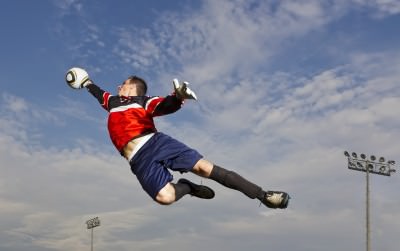 Fast moving subjects can be a little trickier to capture than your normal everyday subjects. You need to be quick and be able to anticipate what's going to happen. If you're looking for a little help, check out these tips on how to capture better action photos.
Fast moving subjects can be a little trickier to capture than your normal everyday subjects. You need to be quick and be able to anticipate what's going to happen. If you're looking for a little help, check out these tips on how to capture better action photos.
Fast Shutter Speed
When shooting action shots, you typically want to freeze the action. Though some motion blur can add movement to the feel of your photos, you don't want your subject's face to be blurred. To freeze the action you need a high shutter speed, at least 1/200th. Of course, a faster shutter speed means less light entering the camera, so you're going to need to open up your aperture and/or increase your ISO settings. Remember that opening up your aperture will decrease the depth-of-field, which usually looks better for sports photos anyway. Increasing your ISO will add noise to your photo, though it will be less noticeable if you're shooting outside at daytime or in a well-lit area.
Leading Room
Giving your subject lead room will generally create a more pleasing composition. Lead room is the space between your subject and the edge of the frame that your subject is facing. So if you're trying to shoot a football player running to the left, try to keep the player on the right side of the frame and leave a good amount of empty space between him and the left edge of the frame. This way he is running “into the picture” and not out.
Anticipating Action
To get the best action shots, you have to know where most of the action is happening. If you're not familiar with the sport you're photographing, it may be difficult to know where to point the camera. Familiarize yourself with the game and players before snapping away. Watch the game for a little while without the camera in your hand. This way, you can figure out which player usually catches the ball or what corner is trickiest for the racers. Don't be afraid to use your burst mode if you feel like a big moment is coming up. Waiting for a single peak shot can sometimes mean you're a moment too early or too late.
Using Manual Mode
When shooting sports, you are typically standing in the same spot or at least the same vicinity for the duration of the game. If the lighting is constant, like if you're shooting on a clear sunny day, an overcast day, or inside a gym, you're probably better off using manual mode. The reason for this is to get consistent exposure. Once you've figured out what the correct exposure is for your scene, you can leave your camera on manual mode with those settings. This will ensure that none of your photos are accidentally to bright or too dark. However, if your lighting is changing constantly or if you are going back and forth between shooting away from the sun and into the sun, then you may want to try aperture or shutter priority mode to keep up with the change in light.
Also Read: THE SEVEN BEST FOCAL LENGTHS FOR PORTRAITS
Recommended Reading:
- 2013 Photographer's Market: The Most Trusted Guide to Selling Your Photography
- How to Create Stunning Digital Photography
- Best Business Practices for Photographers
- The Fast Track Photographer Business Plan: Build a Successful Photography Venture from the Ground Up
- Group Portrait Photography Handbook
- 500 Poses for Photographing Women
- The Best of Family Portrait Photography: Professional Techniques and Images
- 500 Poses for Photographing Group Portraits
- Selling Your Photography: How to Make Money in New and Traditional Markets
- Starting Your Career as a Freelance Photographer
- Photographer's Survival Manual: A Legal Guide for Artists in the Digital Age
- Legal Handbook for Photographers: The Rights and Liabilities of Making Images
- Taking Stock: Make money in microstock creating photos that sell
- Going Pro: How to Make the Leap from Aspiring to Professional Photographer
Written by Spencer Seastrom
Image credit: actionsports / 123RF Stock Photo
